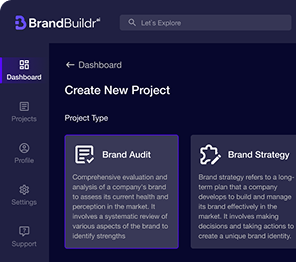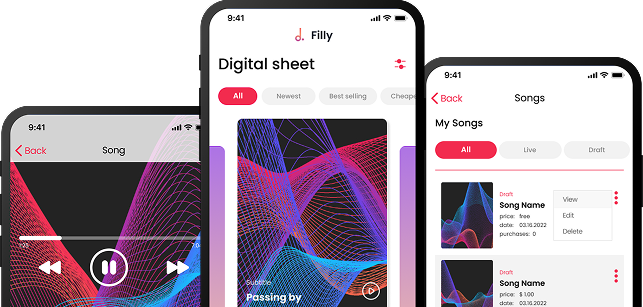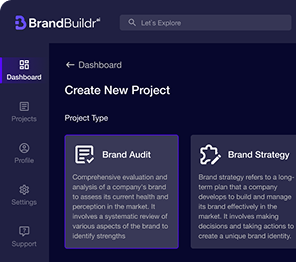Educational technology has emerged as a transformative force in modern education, fundamentally altering how students learn, teachers instruct, and institutions operate. The global edtech industry market projected to reach USD 169.37 Billion in 2024 to USD 598.82 Billion by 2032, growing at a CAGR of 17.10% during the forecast period (2024-2032). This substantial investment reflects the growing recognition among educational stakeholders that digital learning tools are no longer optional supplements but essential components of effective educational delivery that directly impact learning outcomes and institutional efficiency.
The acceleration of digital transformation in education has created unprecedented opportunities for institutions to leverage technology for competitive advantage while addressing the evolving needs of digitally native students. The statistic indicating that 60% of administrators now utilize AI in their institutions is supported by a survey conducted by Ellucian, which represents a rapidly expanding ecosystem of solutions designed to enhance learning experiences, improve educational outcomes, and deliver measurable returns on institutional investments. This technological evolution demands strategic planning and evidence-based decision-making to maximize the benefits of educational technology implementation while ensuring sustainable returns on investment.
.png)
Understanding Educational Technology Tools and Their Role in Learning
Educational technology tools encompass a comprehensive ecosystem of digital solutions designed to enhance teaching effectiveness, improve student learning outcomes, and streamline educational administration. These sophisticated platforms and applications leverage advanced technologies including artificial intelligence, machine learning, and data analytics to create personalized learning experiences that adapt to individual student needs and learning styles.
Technology in education has evolved from simple computer-assisted instruction to comprehensive integrated systems that support every aspect of the educational process, from initial student engagement through assessment and outcome tracking.
The role of educational technology in modern learning environments extends beyond traditional teaching aids to include predictive analytics, adaptive learning algorithms, and real-time performance monitoring that enable educators to make data-driven instructional decisions. Contemporary educational technology tools integrate seamlessly with existing educational infrastructure while providing scalable solutions that accommodate diverse learning populations and institutional requirements. These systems facilitate personalized learning pathways, automated administrative processes, and comprehensive performance tracking that collectively enhance educational quality while reducing operational costs.
The strategic implementation of educational technology tools creates synergistic effects that amplify their individual benefits, resulting in comprehensive educational ecosystems that support continuous improvement and innovation. Modern educational institutions leverage these tools to create blended learning environments that combine the best aspects of traditional instruction with digital enhancement, resulting in more effective and engaging educational experiences. The integration of multiple educational technology solutions enables institutions to create cohesive learning environments that support student success while providing educators with powerful tools for instruction, assessment, and professional development.
The Evolution of Educational Technology Tools
The evolution of educational technology has progressed through distinct phases, from early computer-assisted instruction systems to today's sophisticated AI-driven personalized learning platforms. This technological progression began with simple drill-and-practice software in the 1980s and has culminated in comprehensive learning ecosystems that leverage artificial intelligence, virtual reality, and advanced analytics to create immersive and adaptive educational experiences. Technology in education has transformed from supplementary tools to integral components of instructional design and delivery.
.png)
Contemporary educational technology tools incorporate advanced machine learning algorithms that analyze student behavior patterns, learning preferences, and performance data to provide personalized recommendations and adaptive content delivery. These systems continuously refine their understanding of individual learners, enabling increasingly sophisticated personalization that improves learning outcomes while reducing the time required for content mastery.
Key features include:
- AI-driven personalization
- Real-time adaptation to student needs
- Reduced time to mastery
The latest generation of educational technology tools emphasizes interoperability and integration, enabling seamless data sharing between multiple platforms while maintaining comprehensive student profiles that inform instructional decisions across all educational touchpoints. Cloud-based architectures have enabled scalable deployment of educational technology solutions while reducing infrastructure costs and maintenance requirements. This technological evolution has democratized access to advanced educational tools, enabling smaller institutions to leverage enterprise-grade educational technology solutions that were previously available only to well-resourced organizations.
Key Types of Educational Technology Tools Used in Schools
Educational institutions deploy diverse categories of educational technology tools, each serving specific instructional and administrative functions while contributing to overall educational effectiveness.
Key categories include:
- Learning Management Systems (LMS): Centralized platforms for content delivery, student communication, assessment, and progress tracking.
- Assessment and Evaluation Tools: Automated grading systems, adaptive testing, real-time analytics.
- Collaboration and Communication Tools: Video conferencing, shared document editing, discussion forums, project management.
- Content Creation and Multimedia Tools: Interactive presentations, educational videos, immersive simulations.
The Return on Investment (ROI) of Educational Technology Tools
The return on investment of educational technology tools manifests through multiple dimensions including direct cost savings, improved educational outcomes, enhanced operational efficiency, and increased student satisfaction and retention rates. Educational technology ROI for schools encompasses both quantitative metrics such as reduced administrative costs and improved test scores, as well as qualitative benefits including enhanced teacher satisfaction and improved student engagement. Research demonstrates that strategic educational technology investments generate measurable returns through reduced operational costs, improved resource utilization, and enhanced institutional competitiveness.
Financial returns from educational technology investments include:
- Significant cost savings through automated administrative processes
- Reduced paper and printing expenses
- Optimized resource allocation
Schools implementing comprehensive educational technology solutions report administrative cost reductions of 20–40% while simultaneously improving service quality and response times.
ROI of educational technology extends beyond direct cost savings to include improved student outcomes that enhance institutional reputation and attract additional enrollment, creating sustainable competitive advantages.
Long-term ROI considerations encompass the enhanced capabilities and marketability of graduates who have developed digital literacy skills through exposure to advanced educational technology tools. Institutions that invest strategically in educational technology position themselves for future growth while building sustainable competitive advantages in increasingly competitive educational markets. The compounding effects of educational technology investments create multiplier effects that extend benefits beyond immediate users to encompass broader institutional transformation and improvement.

How EdTech Tools Enhance Learning Outcomes
Educational technology tools enhance learning outcomes through personalized learning algorithms that adapt content delivery to individual student needs, learning styles, and pace preferences. Benefits of educational technology include:
- Improved knowledge retention
- Accelerated learning progression
- Enhanced student engagement through interactive and multimedia-rich experience
Advanced analytics capabilities embedded in educational technology tools provide educators with detailed insights into student learning patterns, enabling targeted interventions and personalized instruction that addresses individual student needs. These systems track multiple dimensions of student engagement including time-on-task, interaction patterns, and performance trends that inform instructional decisions and curriculum modifications.
%20(1).png)
Adaptive learning technologies adjust content difficulty, presentation format, and pacing based on continuous assessment of student understanding and performance. Research indicates that students using adaptive learning technologies require 40–60% less time to achieve learning objectives compared to traditional instruction methods, demonstrating significant efficiency gains that translate directly into improved educational outcomes and resource optimization.
Cost Savings and Efficiency Gains from Using Educational Tools
Educational technology tools generate substantial cost savings through automation of administrative tasks, optimization of resource utilization, and elimination of redundant processes. ROI of educational technology includes:
- Reduced printing costs via digital document management
- Decreased administrative labor through automated enrollment and grading
- Optimized facility utilization through flexible scheduling and space management
Institutions report average cost savings of 15–25% on administrative operations following comprehensive educational technology implementation.
Efficiency gains from educational technology tools include streamlined communication processes, automated report generation, and integrated data management systems that eliminate duplicate data entry and reduce administrative errors. Digital workflow automation reduces processing time for routine tasks by 60–80%, enabling staff to focus on higher-value activities that directly support student success.
Procurement optimization represents another significant source of cost savings:
- 20–40% reductions in technology costs through coordinated purchasing and bulk licensing
- Data-driven purchasing decisions to avoid underutilized licenses
- Energy efficiency improvements through cloud-based solutions and reduced hardware requirements
Key Benefits of Using Educational Technology Tools in the Classroom
Educational technology tools deliver comprehensive benefits that transform classroom environments while enhancing both teaching effectiveness and student learning experiences.
Benefits include:
- Improved student engagement
- Personalized learning delivery
- Real-time assessment capabilities
- Enhanced collaboration opportunities
These tools enable educators to differentiate instruction effectively while providing students with multiple pathways to demonstrate understanding and achieve learning objectives.
Implementation facilitates data-driven instruction through analytics that track progress, identify gaps, and inform adjustments. This enables teachers to support struggling students while providing advanced challenges for high-achieving learners. Technology-enhanced classrooms show improved learning outcomes across diverse student populations, with particularly significant benefits for students with learning differences and those requiring accommodations.
Accessibility improvements through educational technology tools ensure all students can participate fully, regardless of physical limitations, learning differences, or language barriers. Universal design principles embedded in modern educational technology solutions provide multiple means of representation, engagement, and expression that accommodate diverse learning needs, enhancing educational equity and outcomes.

Personalized Learning: Meeting the Needs of Every Student
Personalized learning through educational technology tools represents one of the most significant advances in educational practice, enabling individualized instruction that adapts to each student's unique learning profile, pace, and preferences.
Educational technology tools leverage sophisticated algorithms to:
- Analyze student performance data and learning behaviors
- Create customized learning pathways
- Adjust difficulty levels, learning modalities, and pacing
Effectiveness of personalized learning is demonstrated through:
- Improved student achievement
- Increased engagement
- Higher completion rates
Research indicates personalized learning environments can improve student engagement by up to 35% while reducing time for concept mastery by 40–60%.
Personalized learning systems provide comprehensive student profiles that inform instructional decisions across subjects and contexts. This holistic view enables targeted interventions, enrichment opportunities, and strategic resource allocation. Continuous refinement of personalized learning algorithms ensures experiences become increasingly effective over time.
Enhancing Student Engagement and Participation
Educational technology tools significantly enhance student engagement through interactive content, gamification elements, and collaborative learning opportunities that make learning more dynamic and enjoyable.
Student engagement increases when learners have:
- Agency in their learning process
- Access to multimedia content
- Opportunities for creative expression and collaboration
Interactive features such as simulations, virtual laboratories, and augmented reality experiences create immersive learning environments that facilitate deeper understanding of complex concepts.
Gamification elements embedded in educational technology platforms leverage game design principles to motivate participation and achievement through points, badges, leaderboards, and progress indicators. Research demonstrates gamified learning environments can increase student engagement by up to 90% while improving knowledge retention and real-world application.
Collaborative learning features enable students to work together on projects, share ideas, and learn from peer perspectives regardless of physical location or time constraints. Digital collaboration tools facilitate peer-to-peer learning, group problem-solving, and knowledge construction activities that build critical thinking and communication skills essential for academic and professional success.
How Educational Technology Tools Improve Teacher Efficiency
Educational technology tools dramatically improve teacher efficiency by automating routine administrative tasks, streamlining lesson planning and delivery, and providing powerful tools for student assessment and feedback.
Benefits include:
- Reducing time spent on administrative duties
- Enhancing quality and effectiveness of instruction
- Enabling teachers to focus on direct interaction and professional development
Teachers report time savings of 25–40% on administrative tasks when using comprehensive educational technology solutions. These improvements enable more individualized attention to students while maintaining high-quality instruction across larger class sizes.
Educational technology also facilitates better work-life balance by streamlining workflows and reducing after-hours grading and preparation time.
Professional development opportunities embedded in educational technology platforms support continuous improvement through:
- Integrated training modules
- Peer collaboration features
- Best practice sharing capabilities
This creates more satisfying and sustainable teaching careers while enhancing overall educational quality.
Automating Administrative Tasks with Technology
Educational technology tools automate numerous time-consuming administrative tasks that traditionally consumed significant portions of teacher time and energy.
Examples include:
- Automated attendance tracking
- Grade calculation and reporting
- Parent communication systems
- Assignment distribution and collection platforms
These systems reduce manual data entry by 70–80%, improve accuracy, and provide real-time access to critical information.
Automated grading systems handle routine assessments, offering:
- Immediate feedback to students
- Detailed analytics for teachers
Advanced AI-powered grading tools can even evaluate written responses and provide constructive feedback.
Digital workflow automation extends to:
- Lesson plan generation
- Resource sharing
- Curriculum alignment verification
These tools ensure alignment with standards and help teachers discover relevant materials while saving preparation time.
Using Learning Management Systems (LMS) to Streamline Teaching
Learning Management Systems serve as comprehensive platforms that integrate multiple educational functions into unified interfaces that streamline teaching workflows and enhance instructional effectiveness.
LMS platforms provide:
- Centralized access to course materials
- Student communications
- Assessment tools
- Performance analytics
Single sign-on interfaces eliminate the need to navigate multiple separate systems, reducing cognitive load for teachers while providing seamless experiences for students across all learning activities.
Modern LMS platforms offer sophisticated features including:
- Automated course scheduling
- Integrated multimedia content delivery
- Real-time collaboration tools
- Comprehensive analytics dashboards
These features enable teachers to manage complex educational processes efficiently while maintaining high levels of student engagement and support.
Advanced LMS capabilities include:
- Adaptive release conditions that automatically provide content based on student progress
- Integrated plagiarism detection systems
- Rubric-based assessment tools that streamline evaluation
Mobile accessibility ensures that both teachers and students can access LMS features from any location, supporting flexible learning environments and remote educational delivery.
Measuring the Impact of Educational Technology Tools on Student Outcomes
Comprehensive measurement of educational technology impact requires sophisticated analytics systems that track multiple dimensions of student performance, engagement, and learning progression.
ROI of educational technology encompasses both:
- Quantitative metrics such as test scores, completion rates, and time-to-competency
- Qualitative indicators including student satisfaction, engagement levels, and skill development
Benefits extend beyond traditional academic measures to include:
- Digital literacy development
- Collaborative skills enhancement
- Preparation for technology-rich work environments
Effective measurement strategies utilize multiple data sources including learning analytics, assessment results, behavioral tracking, and stakeholder feedback to create comprehensive pictures of educational technology impact. These multi-dimensional approaches provide nuanced understanding of how educational technology affects different student populations and learning contexts.
Advanced analytics platforms can identify subtle patterns and correlations that inform instructional improvements and technology optimization strategies. Longitudinal tracking capabilities enable institutions to measure long-term impacts of educational technology investments including graduation rates, career readiness, and post-graduation success. Predictive analytics based on historical data help institutions optimize educational technology implementation to maximize positive outcomes while minimizing potential challenges.
Using Analytics to Track Learning Progress and Improvement
Educational technology tools provide sophisticated analytics capabilities that track learning progress through multiple data points including time-on-task, interaction patterns, performance trends, and competency development. These analytical systems generate detailed insights into individual student learning while providing aggregate data that informs curricular and instructional improvements.
Real-time analytics enable proactive interventions that support struggling students while identifying opportunities for enrichment and acceleration.
Learning analytics platforms can identify early warning indicators of academic risk such as:
- Declining engagement
- Missed assignments
- Performance drops across multiple subjects
These predictive capabilities enable timely interventions that improve student success rates while reducing dropout risk.
Advanced analytics also identify successful learning patterns that can be replicated and scaled to benefit additional students and educational contexts. Competency-based analytics track student progress toward specific learning objectives rather than simple course completion, providing more meaningful measures of educational achievement.
Data visualization tools present complex analytics in accessible formats that enable educators to make informed decisions quickly and effectively.
Tracking Engagement and Performance with Digital Tools
Digital tracking tools provide comprehensive monitoring of student engagement through multiple indicators including:
- Login frequency
- Content interaction duration
- Discussion participation
- Assignment completion rates
Student engagement through technology can be measured precisely through these digital footprints that reveal how students interact with educational content and participate in learning activities. These engagement metrics correlate strongly with learning outcomes, enabling educators to identify and address engagement challenges proactively.
Performance tracking systems monitor academic progress through:
- Automated assessment scoring
- Competency achievement tracking
- Learning objective mastery verification
These systems provide immediate feedback to students while generating detailed reports for educators that highlight areas requiring additional attention or support. Integrated performance tracking eliminates the need for separate assessment systems while providing comprehensive data that informs instructional decisions.
Behavioral analytics identify patterns in student learning behaviors that predict success or indicate potential challenges. These insights enable personalized interventions and support strategies that improve individual student outcomes while informing broader instructional improvements. Advanced tracking systems can identify optimal learning conditions for individual students including preferred content formats, interaction styles, and support requirements.
How Kieli Drives ROI Through Personalized Language Learning
Kieli represents a comprehensive educational technology platform specifically designed to facilitate Finnish language mastery through innovative, adaptive learning environments that demonstrate significant return on investment through improved learning outcomes and operational efficiency.

The project’s strategic focus encompassed multiple critical dimensions including:
- Delivery of interactive learning content designed to maintain high levels of user motivation and engagement
- Scalable architecture supporting growth while accommodating diverse exercise types and learning modalities
- Addressing vocabulary acquisition, grammar mastery, pronunciation development, and cultural understanding
Personalized learning pathways represent a core feature of the Kieli platform, utilizing sophisticated algorithms to adapt content delivery based on individual learner progress, preferences, and performance patterns.
Real-time feedback mechanisms provide immediate assessment and correction capabilities that enhance learning effectiveness while maintaining user engagement through positive reinforcement and constructive guidance. The mobile-friendly user experience design ensures accessibility across multiple devices while incorporating modern user interface principles that align with contemporary educational technology usability standards.
The platform successfully launched with overwhelmingly positive user feedback and demonstrated measurable improvements in language proficiency across diverse user populations. Learner engagement metrics exceeded industry benchmarks while completion rates and skill progression indicators validated the effectiveness of the personalized learning approach.
Kieli success illustrates how thoughtful educational technology design that prioritizes usability, personalization, and data-driven learning optimization can produce significant returns through improved educational quality, increased user satisfaction, and platform scalability that supports sustainable growth and expansion.
This case study demonstrates the substantial ROI potential of targeted educational technology solutions that address specific learning challenges through innovative approaches and advanced technology implementation. The success of Kieli provides concrete evidence that strategic educational technology investments focused on personalization, engagement, and outcomes measurement can deliver significant returns through improved learning effectiveness, operational efficiency, and market positioning that creates sustainable competitive advantages in the educational technology marketplace.
The Future of Educational Technology: Trends and Innovations
The future of educational technology promises unprecedented innovation through the integration of artificial intelligence, immersive technologies, and adaptive learning systems that will fundamentally transform educational delivery and effectiveness. Educational technology tools are evolving rapidly toward more sophisticated AI-driven platforms that provide unprecedented levels of personalization while maintaining scalability across diverse educational contexts.
Emerging trends emphasize seamless integration between digital and physical learning environments through:
- Augmented reality applications
- IoT-enabled classroom technologies
- Ambient computing systems
These innovations create immersive learning experiences that engage students more effectively while providing educators with powerful tools for instruction, assessment, and classroom management. The convergence of multiple technological advances creates synergistic effects that amplify the benefits of individual innovations.
Cloud-based architectures enable scalable deployment of advanced educational technologies while reducing implementation costs and maintenance requirements. The democratization of advanced educational technology capabilities through cloud delivery models enables smaller institutions to access enterprise-grade solutions that were previously available only to well-resourced organizations.
The Role of Artificial Intelligence in Personalized Education
Artificial intelligence represents the most transformative force in contemporary educational technology development, enabling unprecedented levels of personalization and adaptive instruction that respond to individual student needs in real-time.
AI in educational technology tools enables:
- Analysis of learning patterns
- Prediction of optimal content delivery methods
- Personalized recommendations for learning resources and activities
Machine learning algorithms continuously refine their understanding of individual learners while adapting content difficulty, pacing, and presentation formats based on ongoing assessment of student progress and engagement.
Natural language processing capabilities enable conversational learning interfaces through chatbots and virtual assistants. The AI in education market reached $5.57 billion in 2024, reflecting rapid adoption of intelligent educational technologies across diverse educational settings. Predictive analytics powered by AI enable early identification of at-risk students while recommending targeted interventions that improve success rates and retention.
Computer vision technologies facilitate automated assessment of student work, including handwriting analysis, diagram evaluation, and laboratory technique assessment, providing immediate feedback while reducing educator workload.
Virtual and Augmented Reality in Education: What's Next?
Virtual and augmented reality technologies are revolutionizing educational experiences by creating immersive learning environments that enable students to explore complex concepts through direct interaction and experiential learning.
Educational technology tools incorporating VR and AR capabilities allow students to:
- Visit historical locations
- Explore molecular structures
- Travel to distant planets
These experiences would be impossible through traditional instruction methods. The VR in education market is projected to reach $28.70 billion by 2030, growing at a 30.7% CAGR, demonstrating substantial investment and adoption of these immersive technologies.
Augmented reality applications overlay digital information onto physical environments, enabling:
- Interactive textbooks
- Laboratory simulations
- Field study enhancements
These technologies bridge the gap between digital and physical learning experiences, offering hands-on learning in safe virtual environments while providing multiple visualization options that enhance understanding of complex concepts.
VR and AR platforms allow students to practice skills and procedures repeatedly without resource constraints or safety concerns.
The integration of immersive technologies with artificial intelligence creates adaptive virtual learning environments that respond to student actions and provide personalized guidance and feedback within immersive contexts. These hybrid systems combine the engagement benefits of immersive experiences with the optimization capabilities of AI-driven personalization.
Collaborative VR environments enable students from different locations to participate in shared learning experiences while building social interaction and teamwork skills in virtual contexts.
Final Thoughts
The strategic investment in educational technology tools represents a fundamental shift toward evidence-based educational practices that deliver measurable returns through improved learning outcomes, enhanced operational efficiency, and increased institutional competitiveness. ROI of educational technology encompasses both immediate benefits including cost savings and productivity improvements, as well as long-term advantages including enhanced institutional reputation, improved graduate outcomes, and sustainable competitive positioning in evolving educational markets. Benefits of educational technology extend beyond financial considerations to include improved educational equity, enhanced accessibility, and preparation of students for technology-rich professional environments.
Educational institutions must approach technology investment strategically, focusing on solutions that align with institutional goals while providing measurable benefits for students, educators, and administrators. Successful educational technology implementation requires comprehensive planning, stakeholder engagement, and ongoing assessment to ensure that investments deliver intended outcomes while supporting long-term institutional objectives. The future of education increasingly depends on the strategic integration of advanced technologies that enhance human potential while creating more effective, efficient, and equitable learning opportunities.
Educational leaders who embrace the transformative potential of technology while maintaining focus on educational excellence will create institutions that thrive in the digital age while delivering exceptional value to students, families, and communities. The path forward requires continued investment in educational technology infrastructure, professional development, and innovative practices that leverage technology's potential to enhance human learning and achievement. By partnering with experienced technology providers in the edtech industry, institutions can access the expertise and solutions necessary to maximize their educational technology investments while achieving sustainable returns that support long-term educational excellence and institutional success. Contact Codebridge today to learn how our expertise in education technology can support your institution’s digital evolution and long-term success.
Heading 1
Heading 2
Heading 3
Heading 4
Heading 5
Heading 6
Lorem ipsum dolor sit amet, consectetur adipiscing elit, sed do eiusmod tempor incididunt ut labore et dolore magna aliqua. Ut enim ad minim veniam, quis nostrud exercitation ullamco laboris nisi ut aliquip ex ea commodo consequat. Duis aute irure dolor in reprehenderit in voluptate velit esse cillum dolore eu fugiat nulla pariatur.
Block quote
Ordered list
- Item 1
- Item 2
- Item 3
Unordered list
- Item A
- Item B
- Item C
Bold text
Emphasis
Superscript
Subscript




















.avif)

.avif)




.png)
